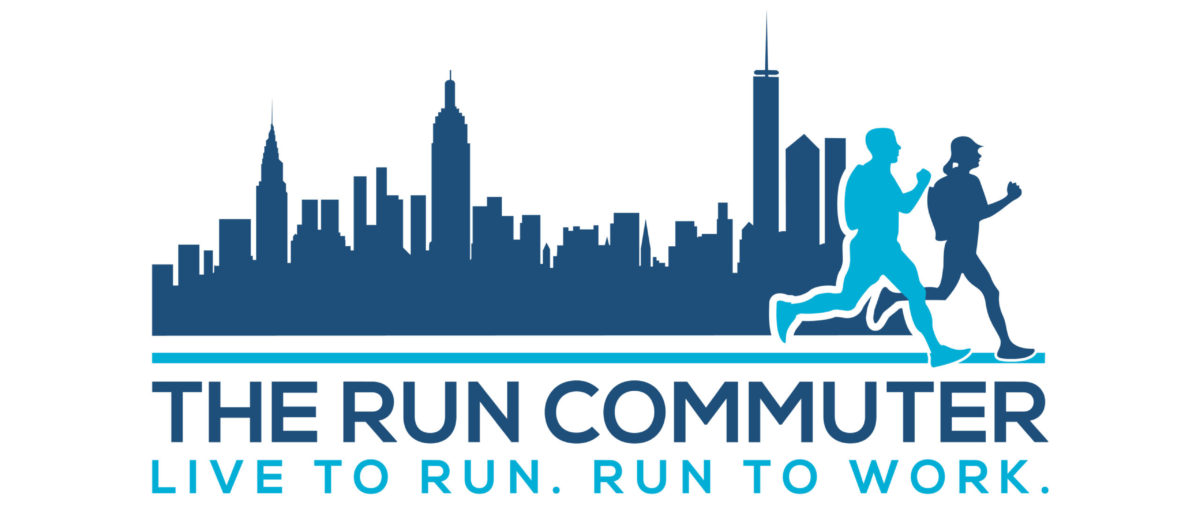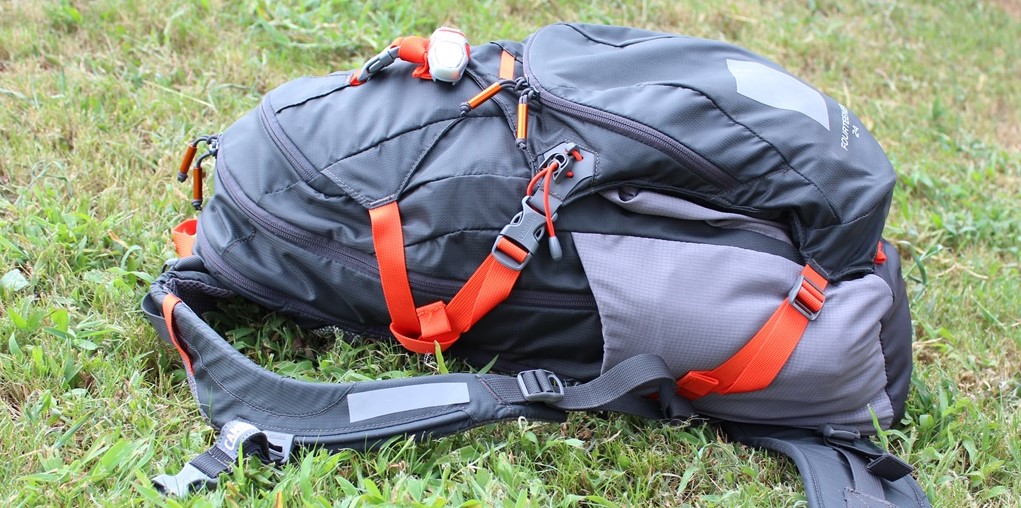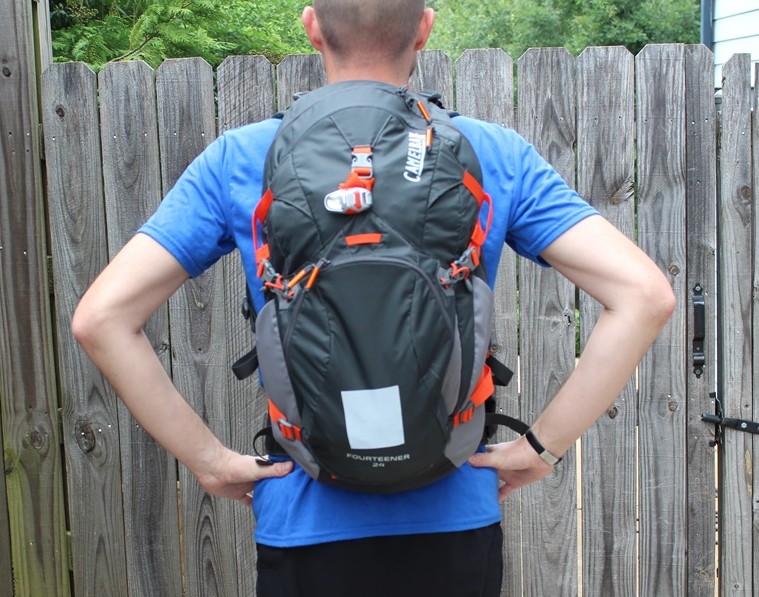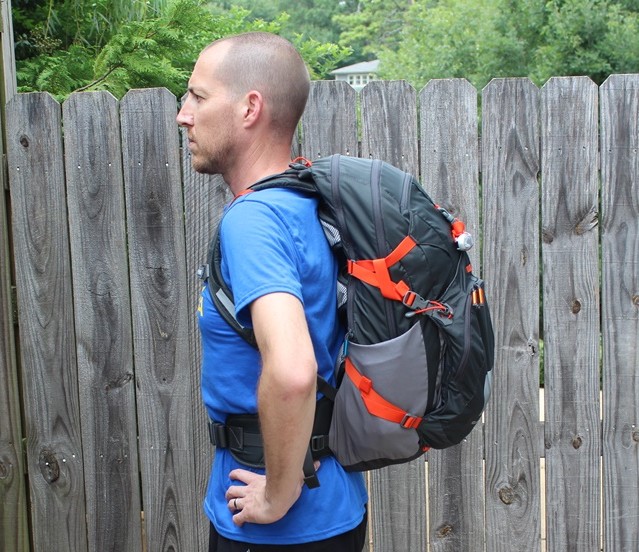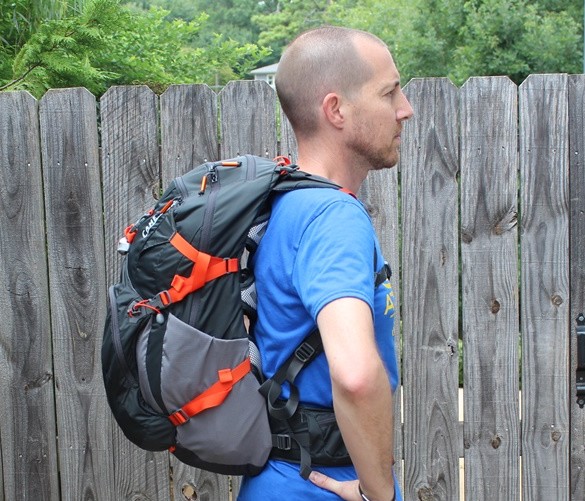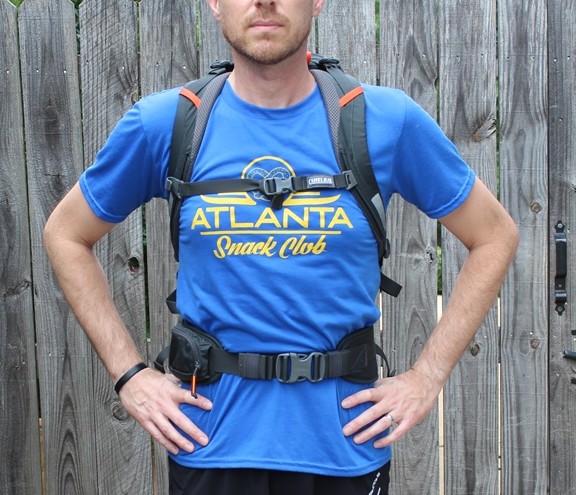As run commuters, we often borrow products from other specialty areas, such as camping supplies, bike commuting accessories, or travel gear, and piece those items together to make the perfect setup for running to work. The Camelbak Fourteener 24 is marketed as a hydration backpack for hikers and has many of the features we look for in a good running pack, so we decided to try it out and see how it performs on the run.
Note: The model we tested was the 2017 version. Camelbak has since redesigned the pack and added some features that the 2017 model lacked.
Test Model
Camelbak Fourteener 24 (2017 model)
Size: One size fits all
Carrying Capacity: 24L, 1,280 cu. in.
Cost: US $150
Mods/Add-ons: Reflective patches, Nathan Orion strobe,
Performance and Evaluation
I have run approximately 120 miles with this pack so far, and I have found it to be one of the better large-capacity running packs on the market. The straps and waist belt are comfortable. The back padding allows for great ventilation. I can easily pack larger winter jackets and clothing in addition to all my other gear, so if I want to go out for lunch or ride transit home, I am ready for the weather. It does bounce around slightly even when all the straps are fully tightened, however the design of the suspension system distributes the movement in a way that is much less noticeable than on other backpacks. The added hydration system is perfect for long run or bike commutes on hot summer days, and is an essential addition if you plan to run an ultra-marathon or longer trail race with it. Bonus: it doesn’t hold any bad smells, even after many miles and lots of lost sweat. Let’s look at some of the features in more detail.
What I Liked
Carrying Capacity
Great Ventilation
Overall Comfort
Low Smell Factor
What I Didn’t Like
Straps loosen with movement
Only one, small, usable quick-access pouch
No rain cover
Backpack Details
Front
There is a LOT of front storage on this pack. The front zippered pouch is large enough to store two standard size water bottles and also includes smaller zippered and mesh pockets for storing small accessories like keys, wallet, pens, or flash drives. The back of the entire pouch is detached from the pack and serves as additional storage for things like a pair of shoes. They straps can then be tightened to hold everything firmly and keep it from falling out as you run. Underneath the front pouch are two loops for lashing additional gear, such as hiking poles or a rolled up jacket, and they can be tucked away into little pouches when not in use.
At the top of the pack is a zippered, fleece-lined pouch for carrying sunglasses, cell phone, earbuds, or work IDs.
Sides
There are large, stretchy pockets on both sides of the pack that can hold a phone, water bottle, or other hand-sized item. The pack’s external compression straps cross over the pouches, and when cinched down, will hold any items inside pouches tightly in place.
Main Compartment
There’s not much to say about this aside from the massive amount of space.
Back Panel
The back panel includes three raised areas as part of Camelbak’s “Integrated Ventilation” system. I did not think I was going to like the running feel of this at first, as most packs that include ribbed or raised areas tend to slightly rub my back or are just generally downright uncomfortable. However, I was very surprised that the system is not only comfortable, but the ventilation system works much better than another favorite design of mine – Osprey Packs Airspeed system.
Suspension System
Straps
The shoulder straps are generally unremarkable. In addition to the standard lower buckles used to tighten the pack against your body, there are upper buckles as well, to change the top angle of strap to better fit on your shoulders. The straps are fastened together horizontally with a single sternum strap, and once everything is cinched down and tight, the pack is tight and comfortable to wear.
Waist band
The waist band is wide and almost entirely padded, save for the area where the buckles fasten together. On the right side, there is a small, zippered pouch. It’s not quite large enough to hold a phone, but is perfect for a wallet or a set of keys. On the run, the waist straps tended to loosen and I had to re-tighten them every 10 minutes or so. The waist band was quite comfortable overall, and created no noticeable chafe or irritation on the run.
Hydration System
The Fourteener comes with a sizable 3-liter reservoir. The entire system is pretty standard, with tube holders on the shoulder straps and a bite-valve mouthpiece. The bladder is quick to open and easy to fill.
Conclusion
This bag is probably overkill for most run commuters, but it really is fantastic. I prefer the Camelbak Fourteener over my all-time favorite Osprey Rev (discontinued) and another great – the Osprey Manta. The carrying capacity is insane, and I have lost items inside this pack more than once, only to find them again days later at the bottom of the front pouch. The additional space is perfect for those fall/winter transition days where the morning is perfectly comfortable for running in tights and a short sleeve shirt, but the afternoon lunch break or transit ride home requires a heavy winter jacket. Or, you decide to pick up a bag of groceries on the way home. Don’t worry – they’ll fit.
